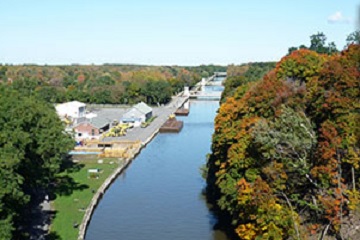Table of Contents
What Is Canal?
A canal is an artificial waterway that permits ships and boats to pass from one place to another place. The canal is also called navigation.

A canal is an artificial channel that permits boats and ships to pass from one edge of the canal to another. Canals are additionally used to ship water for water systems and other human purposes. While the approach of more productive types of transportation has decreased the requirement for canals, they actually assume a crucial part as courses for transportation and fostering global commerce.
There are two sorts of channels: waterways and aqueducts. waterways are the navigable parts of a body of water and can be located within a bay or open sea can associate at least two water bodies or can create network networks inside the city. Aqueducts are utilized only to move water for drinking, horticulture, and hydroelectric power.
“canal” gets from the Old French word channel, and that signifies “channel.” The oldest knowns are are aqueducts built in Mesopotamia thousands of years ago. Since then, canals have played a significant role in connecting cultures and facilitating business.
The canal is used for different purposes like irrigation, water treatment plant, etc.
Types of Canal:
Based on usage there are 2 types of canals:
- Aqueducts
- Waterways
Based on discharge there are 5 types of canals:
- Main Canal
- Branch Canal
- Major Distributary
- Minor Distributary
- Watercourse or Field Channel
Based on provider canals can be classified into 2 types:
- Unlined Canals
- Lined Canal
Based on alignment there are 3 canal types:
- Contour Canal
- Watershed Canal
- Side slope Canal
Applications of Canal:
- Canals are used for field irrigation.
- Canals supply water to power plants.
- Canals are used to fill water tanks.
Advantages of Canal:
- The area which is not irrigated by conventional methods can be irrigated by constructing canals.
- Canal irrigation prevents droughts.
- Canal irrigation is a permanent irrigation system.
- Canal irrigation covers a huge amount of area.
- Apart from irrigation, there are some other uses of the canal such as hydroelectricity generation, navigation, drinking water supply, and fishery development.
